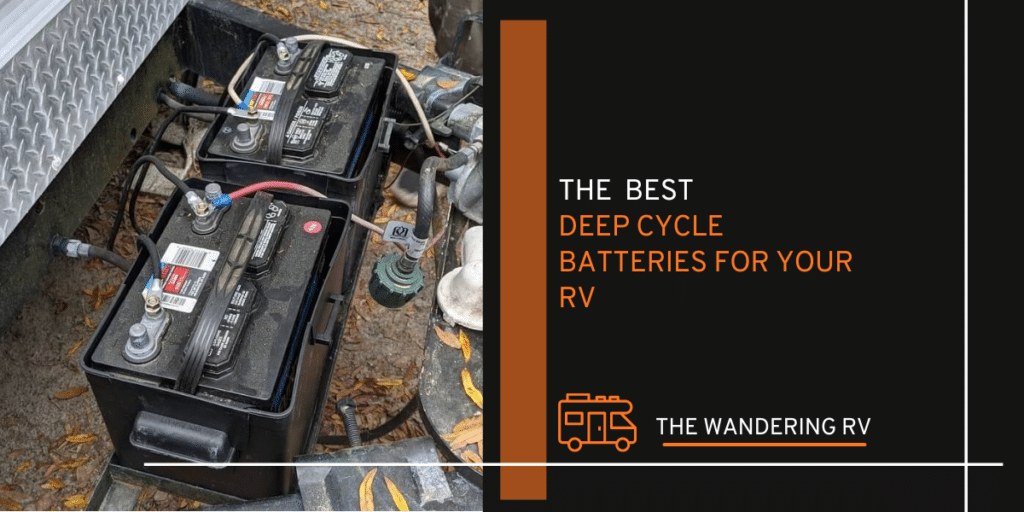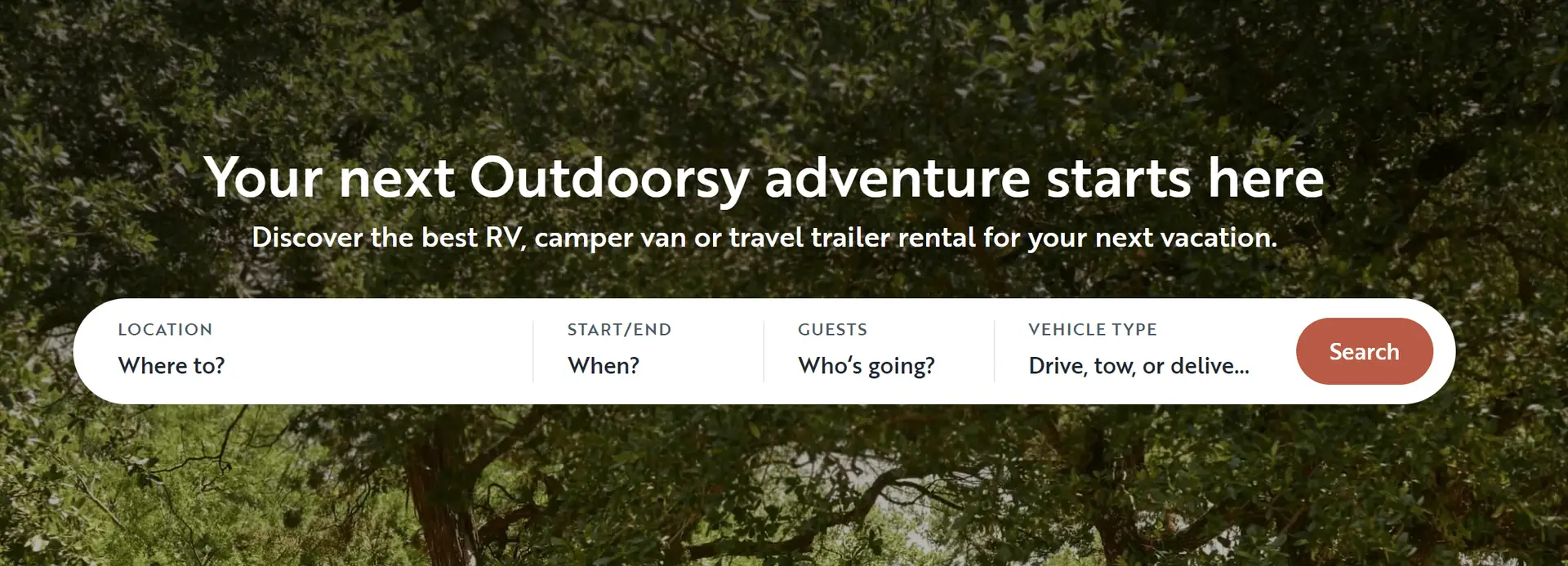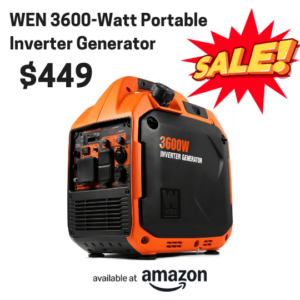
Powering your way through off-grid adventures in your RV requires a trusty sidekick: the deep cycle battery! These unsung heroes of the RV world keep your lights shining, appliances humming, and devices charged even when you’re miles away from civilization. In this electrifying blog post, we’ll help you navigate the maze of deep cycle battery options with a spark of humor and a jolt of expertise.
Join us as we explore the thrilling world of lead-acid, AGM, and lithium-ion batteries, each with its unique strengths and quirks. We’ll also dive into the exciting realm of boondocking, where a reliable battery is your ticket to off-grid glory. But wait, there’s more! Proper battery maintenance is key to a long and happy relationship with your deep cycle companion. We’ll share essential tips on checking water levels (for certain battery types), keeping terminals corrosion-free, and practicing good battery storage etiquette.
So buckle up and prepare for a high-voltage journey through the ins and outs of deep cycle batteries for your RV. Together, we’ll energize your understanding of your RV’s electrical needs and help you make the brightest choice for your off-grid escapades!
Table of Contents
- Choosing Your RV Battery: Comparing Key Features
- Types of Deep Cycle RV Batteries
- Top RV Batteries
- Choosing the Best Battery for Boondocking
- Maintaining Your RV Battery’s Lifespan
- Conclusion
Note: Some of the links in this article are affiliate links. This doesn’t cost you any more than normal. Read our disclaimer for more info.
Choosing Your RV Battery: Comparing Key Features
Below, we have compiled a comparison table showcasing the different types of RV batteries: lead-acid, SLA (AGM), and LiFePO4. The table compares essential factors such as weight, cost, size, depth of discharge (DoD), and maximum charge rate for a 100Ah battery in each category. This side-by-side comparison will help you quickly assess the differences between these battery types, allowing you to make an informed decision when choosing the best battery for your specific RV needs. After the table, you’ll find our recommendations for each battery type to further guide your selection process.
| Battery Type | Weight | Cost | Discharge (DoD) | Max Charge Rate | Max Cycles | Life Span |
| Lead Acid | 60lbs | $100 | 50% | 30A | 400-800 | 2-4 years |
| SLA (AGM) | 50lbs | $159 | 50-80% | 30A | 600-1000 | 4-6 years |
| LifePO4 | 24lbs | $320 | 90% | 100A | 2000-7000 | 5-15 years |
Types of Deep Cycle RV Batteries
If you’re looking to power your home away from home, it’s essential to choose the right type of deep cycle RV battery. The three main types of deep cycle RV batteries are lead-acid, AGM, and Lithium-Iron Phosphate (LiFePO4); each offering its own advantages and drawbacks. Each has its own set of pros and cons that can make or break your next adventure.
Lead-acid batteries: affordable, heavier, but shorter lifespan
Lead-acid batteries are the most basic option for powering your RV. They’re relatively inexpensive but come with a catch – they typically last around 400 cycles before needing replacement. These batteries also tend to be heavier compared to other types. If you’re limited in funds and don’t mind exchanging batteries more regularly and dealing with the extra weight, this could be the best option.
SLA (AGM) batteries: maintenance-free, moderate weight, with better deep cycle performance at a higher cost
Stepping up in price (and performance), we have Sealed Lead Acid (SLA) Absorbent Glass Matt (AGM) batteries. These maintenance-free batteries offer better deep cycle capabilities than their lead-acid counterparts and are moderately weighted. While still being more affordable than lithium-ion options, keep in mind that they require proper charging techniques to avoid damage over time.
Lithium Iron Phosphate (LiFePO4) batteries: reliable performance without breaking the bank
While not as high-tech as lithium-ion batteries, LiFePO4 batteries pack a punch at a more budget-friendly price point. They offer a solid balance of performance, durability, and safety, with a longer lifespan than both lead-acid and AGM batteries.
Top RV Batteries
Sealed Lead Acid – AGM
- UB121000 SLA is a 12V 100AH Group 30H Sealed Lead Acid (SLA) Maintenance Free Rechargeable Battery, UL Listed
- USA-based company | UL recognized | Reliable power for critical applications with exceptional quality and dedicated U.S.-based customer support.
- Absorbent Glass Mat (AGM) technology, designed for versatile mounting, including upside-down installation.
LifePO4
- 【Lithium Iron Battery】: The lifespan of LiFePO4 (lithium) batteries is 8 to 10 times longer than that of regular lead-acid batteries (2000~5000 cycles vs 300-500 cycles). The usable capacity also doubles compared to that of a lead-acid battery while the weight is 30% less thanks to its significantly higher energy density. Without any memory effect, the lithium battery can hold a charge better while not in use and will not lose capacity due to the previous discharge state.
- 【Built-In BMS & Convenience & Maintenance Free】: The built-in BMS (Battery Management System) protects the battery from overcharge, over-discharge, over-current, and short circuits with excellent self-discharge rate. Built-in high temp cut-off prevents charging over 122 °F (50 °C). Plus, Li-Ion batteries can be safer than lead Acid batteries, which have no protection against ground faults. This product is your ideal choice for both outdoor and indoor applications.
- 【Capacity Expansion】: Our lithium batteries can be connected in parallel and in series for larger capacity and voltage. Max connection in series: Up to four identical batteries for up to 48V. Max connection in parallel: Up to four identical batteries up to 400AH. Batteries can also be connected in parallel and series at the same time for up to 48V 400AH. Only batteries with the exact same voltage and capacity purchased within a six-month window can be used in parallel or series.
- The Industry’s First Mini LiFePO4 Battery: The LiTime 12V 100Ah Mini is the capacity-leading flagship delivering the highest energy density in LiTime history and even the whole industry. Protected all around by the powerful 1st Gen LiTime BMS, LiTime 12V 100Ah Mini is taken with the latest technology that redefines the size of the LiFePO4 battery!
- Mini in Size Max on Power: LiTime 12V 100Ah LiFePO4 Auto battery MINI took up only 0.25ft³ of space and is 35% smaller than before. Exquisite technology makes the 12V 100Ah size mini enough but powerful as usual (100% 1280Wh energy storage), install the mini 12V 100Ah battery wherever you want without regard for space
- Weighs 19lbs, 10% Lighter Than Ever: Be your first choice of LiFePO4 batteries for every outdoor decision, weighs only 19lbs, 10% lighter than ever. (The 12V 100Ah regular version: weighs 24lbs) It will be easier to maintain, move and take on the go.
Choosing the Best Battery for Boondocking
When boondocking, selecting the right battery type for your RV is crucial to ensure a seamless off-grid experience. Each battery type has its own set of advantages and drawbacks, making it essential to understand their characteristics before choosing the best option for your needs.
Comparing Discharge Capacities
One critical aspect to consider is the depth of discharge (DoD) for each battery type, which represents the percentage of the battery capacity that can be used before causing potential harm to the battery.
Lead-acid batteries: Lead-acid batteries have a DoD of around 50%, which means that only half of the battery capacity can be used safely without shortening its lifespan. While this may be sufficient for occasional boondocking trips, frequent off-grid campers may find the limited capacity limiting.
AGM batteries: AGM batteries claim an improved DoD of up to 80%, providing more usable power for your RV’s needs. This makes them a better choice for boondocking enthusiasts who require a greater power reserve. From my experience, 50% is a much safer threshold to keep the battery from wearing out prematurely.
Lithium-ion and LiFePO4 batteries: Both lithium-ion and LiFePO4 batteries boast an impressive DoD of around 90-95%, allowing you to utilize nearly their entire capacity without causing harm. This is particularly advantageous for boondocking, as it maximizes the power available to run appliances and devices for extended periods.
Power Density Comparison
Another important factor when choosing a battery for boondocking is the power density, which refers to the amount of energy stored per unit of weight.
Lead-acid batteries: These batteries have the lowest power density, making them heavier and bulkier compared to other battery types. The extra weight might be a concern if your RV has limited cargo-carrying capacity.
AGM batteries: AGM batteries have a slightly higher power density than lead-acid batteries but still lag behind lithium-based options. This makes them a moderate choice in terms of weight and size.
Lithium-ion and LiFePO4 batteries: Both lithium-ion and LiFePO4 batteries offer the highest power density among the options, providing the most energy storage for their weight. This makes them an excellent choice for boondocking, as they save precious cargo space and reduce the overall weight of your RV.
Charging with Solar and Generators
Finally, when boondocking, it’s important to consider how well each battery type charges using solar panels or backup generators.
Lead-acid and AGM batteries: Both of these battery types have relatively slower charging times, which can be a drawback when relying on solar power or needing a quick top-up using a generator.
Lithium-ion and LiFePO4 batteries: These batteries charge significantly faster than lead-acid and AGM options, making them more efficient when using solar panels or backup generators. This ensures that your RV’s power needs are met more effectively while boondocking.
In conclusion, while each battery type has its pros and cons, lithium-based options (lithium-ion and LiFePO4) tend to be the best choice for boondocking due to their high DoD, excellent power density, and faster charging capabilities.
Maintaining Your RV Battery’s Lifespan
Prolong the life of your deep cycle RV battery and keep it performing at its peak by following some simple maintenance practices. After all, a well-maintained battery is a happy battery, and a happy battery means more fun-filled adventures for you!
Choosing the Right Charger for Your Battery Type
Proper charging plays a significant role in maintaining your RV battery’s lifespan. It’s essential to choose a charger specifically designed or adjustable to charge the type of battery you have. Using an incorrect charger can result in undercharging or overcharging, which can damage the battery and shorten its life.
Keep in mind that the onboard DC converter in your RV may not be the ideal option for charging your RV battery. Some onboard converters may not provide the appropriate charging voltage or charging profile needed for your specific battery type, leading to less-than-optimal performance and potentially reducing the battery’s lifespan.
- Converters 120VAC shore power into usable 12VDC power
- Capable of charging your RV’s battery while also powering low voltage lights and appliances
- Available in several capacities: 35-amp, 45-amp, 55-amp, 60-amp, 75-amp, and 100-amp.
- Works with both lead batteries and lithium batteries
When selecting a charger, ensure it’s compatible with your battery type, whether it’s lead-acid, SLA (AGM), lithium-ion, or LiFePO4. Many modern chargers have multi-stage charging profiles, which can adapt to the specific needs of your battery, ensuring the appropriate charge level is applied throughout the charging process. Additionally, some chargers come with adjustable settings, allowing you to configure them according to your battery type and charging requirements. Most solar chargers also have settings to properly charge your specific battery type.
- MEET THE GENIUS10 — Similar to our G7200, just better. It’s 17% smaller and delivers over 115% more power. It’s the all-in-one charging solution – battery charger, battery maintainer, trickle charger, plus desulfator.
- DO MORE WITH GENIUS — Designed for 6-volt and 12-volt lead-acid (AGM, Gel, SLA, VRLA) and lithium-ion (LiFePO4) batteries, including flooded, maintenance-free, deep-cycle, marine and powersport batteries.
- ENJOY PRECISION CHARGING — An integrated thermal sensor dynamically adjusts the charge based on ambient temperature, preventing overcharging in hot weather and undercharging in cold, ensuring optimal battery performance.
Regularly Checking Water Levels (for Lead-acid)
Lead-acid batteries need some TLC in the form of regular water level checks. Ensure the electrolyte covers the plates but doesn’t exceed the maximum level line, and top off with distilled water when needed. Remember, tap water contains minerals that can harm your battery – so always opt for distilled water.
Keeping Terminals Clean from Corrosion
Corroded battery terminals can lead to poor connections and reduced efficiency. Keep them clean by periodically using a mixture of baking soda and vinegar, followed by a smear of petroleum jelly or a terminal protectant spray for added defense.
Properly Storing When Not in Use
Before storing your battery, disconnect any connected devices or chargers, fully charge it, and keep it in a cool, dry place away from direct sunlight or freezing temperatures (Battery University recommends between 50°F and 80°F).
Conclusion
Now that we’ve given you the lowdown on the best deep cycle batteries, it’s time to make an informed decision and gear up for your next off-grid adventure. Remember, a reliable deep cycle battery is essential for keeping your RV powered and ensuring a hassle-free experience. Armed with our top picks and expert insights, you can confidently choose the right battery to meet your needs and enjoy your RV journeys to the fullest.
Related Post — Jackery Explorer 1000 Portable Power Station Review
Other RV Buying Guides:
- Must-Have RV Accessories, Supplies & Parts
- RV Refrigerators
- RV Air Conditioners
- RV Water Pumps
- RV Antennas
- RV Recliners
- RV Roof Coating & Sealants
- RV Leveling Blocks
- RV Batteries
- Best Portable Grills
- RV Water Filters
- RV Surge Protectors
- RV Generators
- RV Mattresses
- RV Backup Cameras
- Portable Toilets
- Portable Camp Sinks
- Camp Chairs with Canopy
- RV Covers
- RV WiFi Boosters
- RV Solar Panels: A Beginner’s Guide to Camping Solar Power









